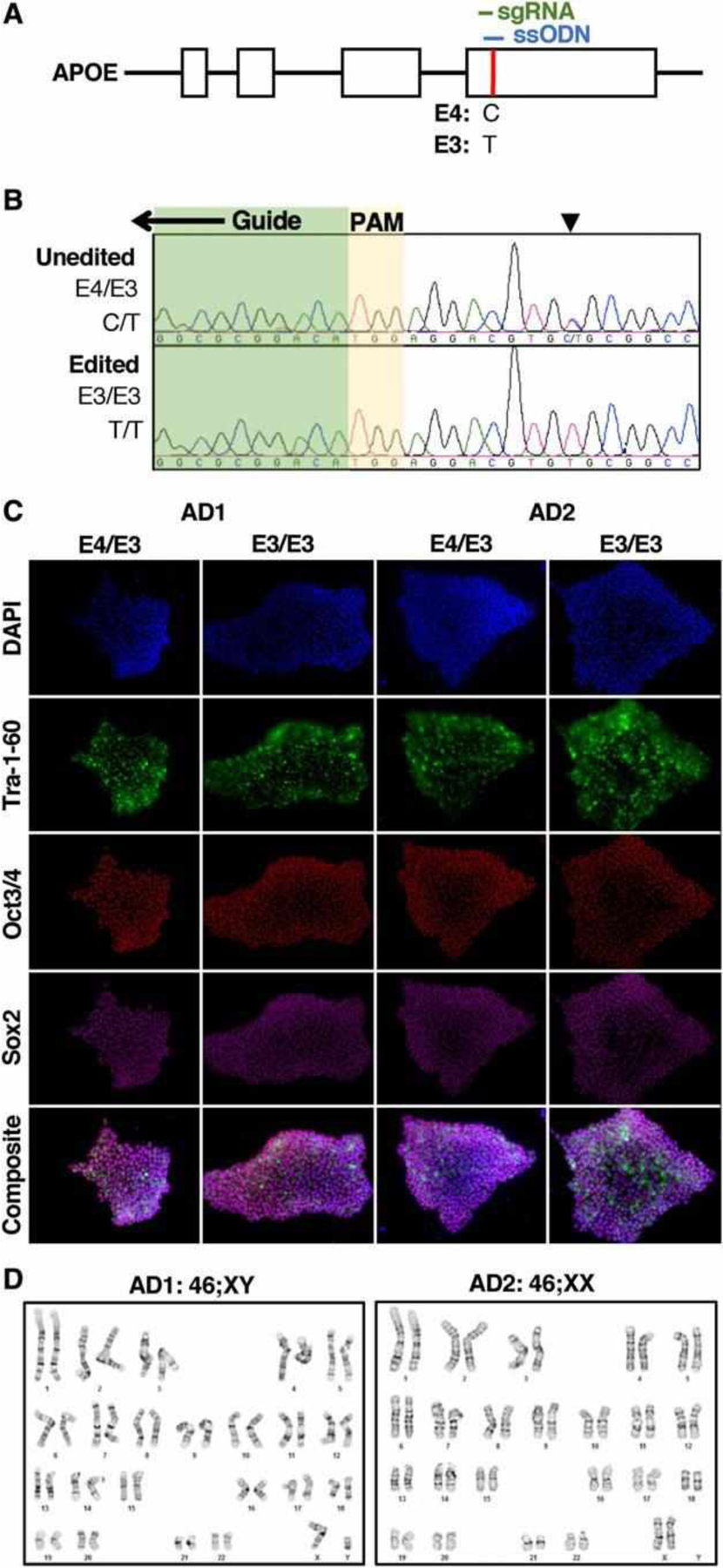FIGURE 1:

Genome editing of E4/E3 human induced pluripotent stem cells (hIPSCs). (A) The APOE gene’s E3 and E4 alleles are defined by a single nucleotide polymorphism (red) in its terminal exon. The nucleotide code for the E4 and E3 alleles are depicted below. sgRNA (green) = single guide RNA; ssODN (blue), single-stranded oligodeoxynucleotide template for homology-directed repair. (B) Representative chromatograms depicting the targeted editing of a cell line with the E4/E3 genotype (C/T) to E3/E3 (T/T) at the indicated single nucleotide polymorphism (arrowhead). A portion of the guide sequence (green) and the positionally adjacent motif (PAM) are indicated. (C) hiPSCs derived from Alzheimer disease patient fibroblasts with E4/E3 genotype expressed characteristic markers of embryonic stem cells. Editing hiPSCs to the E3/E3 genotype did not alter expression of pluripotency markers. (D) Editing iPSCs to the E3/E3 genotype did not alter their karyotype.
